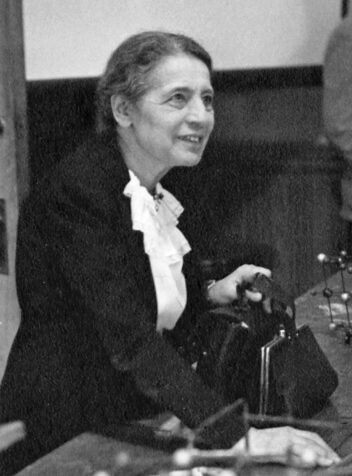The Birth of an Ambitious Vision

President Lyndon B. Johnson stood before Congress on January 8, 1964, with a declaration that would reshape American social policy for generations. The war on poverty is the unofficial name for legislation first introduced by United States President Lyndon B. Johnson during his State of the Union Address on January 8, 1964. This legislation was proposed by Johnson in response to a national poverty rate of around nineteen percent. Johnson’s words weren’t just political rhetoric – they were a battle cry against economic inequality that had persisted even during America’s post-war prosperity.
Johnson, who, as a teacher, had observed extreme poverty in Texas among Latino-Americans, launched an “unconditional war on poverty” in the first months of his presidency with the goal of eliminating hunger, illiteracy, and unemployment from American life. His personal experience with poverty-stricken communities gave him unique insight into the struggles facing millions of Americans. The timing was perfect – the country was riding high on economic growth, and Johnson believed it was time to lift everyone up.
The Economic Opportunity Act: A Revolutionary Framework

The centerpiece of the War on Poverty was the Economic Opportunity Act of 1964, which created an Office of Economic Opportunity (OEO) to oversee a variety of community-based antipoverty programs. This wasn’t just another government agency – it was a complete reimagining of how federal resources could tackle poverty at its roots. The Act established roughly forty different programs, each designed to address specific aspects of economic hardship.
The speech led the United States Congress to pass the Economic Opportunity Act, which established the Office of Economic Opportunity (OEO) to administer the local application of federal funds targeted against poverty. The Office of Economic Opportunity was the agency responsible for administering most of the war on poverty programs created during Johnson’s Administration, including VISTA, Job Corps, Head Start, Legal Services and the Community Action Program. The OEO became the command center for what would become the most comprehensive anti-poverty initiative in American history.
Medicare and Medicaid: Healthcare for All

The Economic Opportunity Act of 1964 created a Job Corps and Volunteers in Service to America; the Food Stamp Act of 1964 provided low-income people assistance in purchasing food; the Elementary and Secondary Education Act of 1965 authorized federal expenditure on schools with low-income students; and the Social Security Amendments of 1965 created Medicaid, which funds some medical costs for low-income individuals, and Medicare, a health insurance program for people aged 65 and over. These healthcare programs represented a fundamental shift in how America approached medical care for its most vulnerable populations.
Medicare provided health insurance to people 65 and older, regardless of income or medical history. Medicare also spurred the racial integration of thousands of hospitals and doctor’s offices by making payments to health care providers conditional on desegregation. The program didn’t just provide healthcare – it became a powerful tool for civil rights, forcing medical institutions to integrate or lose federal funding. Today, Medicare provides health insurance for about 60 million Americans at a cost of $776.2 billion.
The Food Stamp Program: Feeding America’s Hungry

The Food Stamp Act was passed in 1964 as part of President Lyndon Johnson’s Great Society Program. The goal of the program was to achieve a more effective use of agricultural overproduction, improve levels of nutrition among individuals with low incomes, and strengthen the agricultural economy. This program addressed a cruel irony – while farmers struggled with surplus crops, millions of Americans went hungry. The Food Stamp Program created a bridge between abundance and need.
By April of 1965, participation reached more than 500,000 and then increased to 15 million by October of 1974. The dramatic rise in participation is attributed to program expansion from eight counties to 43 in 22 states with 380,000 participants. Since its inception, the Food Stamps Program, now the Supplemental Nutrition Assistance Program aka SNAP, has become the largest federal nutrition assistance program in the United States. In 2021, the Biden administration increased the benefits of SNAP by 25%, increasing the monthly benefits of the program from $121 per person to $157.
Head Start: Giving Children a Fighting Chance

The OEO launched Project Head Start as an eight-week summer program in 1965. The project was designed to help end poverty by providing preschool children from low-income families with a program that would meet emotional, social, health, nutritional, and psychological needs. Head Start recognized something revolutionary – that poverty’s most devastating effects begin in early childhood, and that intervention during those crucial years could break the cycle of generational poverty.
The study found children enrolled in Head Start were significantly more likely to finish high school and enroll in and finish college than peers without access to the program. The results also show that cohorts with access to Head Start experienced lower rates of adult poverty, had higher rates of employment and were less likely to have received public assistance. Recent research from UCLA reveals that the program’s benefits extend far beyond childhood, creating lifelong improvements in educational attainment and economic stability.
Education Reform: Breaking Barriers to Learning

The most important educational component of the Great Society was the Elementary and Secondary Education Act of 1965, designed by Commissioner of Education Francis Keppel. It was signed into law on April 11, 1965, less than three months after it was introduced. This legislation marked the first major federal investment in public education, recognizing that quality education was essential to breaking the poverty cycle.
This major piece of legislation was followed by the Higher Education Act of 1965, which increased federal money given to universities, created scholarships and low-interest loans for students, and established a national Teacher Corps to provide teachers to poverty-stricken areas of the United States. The Act also began a transition from federally funded institutional assistance to individual student aid. These programs opened doors that had been closed to countless Americans, making higher education accessible to those who previously couldn’t afford it.
Community Action Programs: Power to the People

Programs included the Community Action Program, which initiated local Community Action Agencies charged with helping the poor become self-sufficient; and Project Head Start, which offered preschool education for poor children. The Community Action Program embodied a radical idea – that poor communities themselves should have a voice in designing solutions to their problems. This approach was controversial but groundbreaking.
Even Community Action programs, so fraught during their few short years of activity, inspired and empowered a new generation of minority and poverty community activists who had never before felt, as one put it, “this government is with us.” These programs didn’t just provide services – they created leaders and sparked movements that would continue fighting for social justice long after the programs ended.
Job Corps and Workforce Development

Programs, such as the Job Corps, which helped transition youth into workers, and the Community Action Program, which subsidized grassroots community projects, helped remove the destitute from the streets. This established the Office of Economic Opportunity that would create and supervise new programs such as job training, Job Corps and other local centers that would help those in need. The Job Corps represented a new approach to unemployment – instead of simply providing welfare, it offered skills training and job placement services.
The program recognized that many Americans wanted to work but lacked the skills demanded by a changing economy. By providing vocational training, literacy education, and job placement assistance, the Job Corps aimed to give people the tools they needed to become self-sufficient. This approach was both practical and dignified, offering a path out of poverty rather than just temporary relief.
Housing and Urban Development

Additionally, the Model Cities Program helped provide cleaner, safer, and cheaper living conditions for low-income families. Housing was recognized as a fundamental component of the poverty puzzle. Poor housing conditions didn’t just affect quality of life – they impacted health, educational outcomes, and economic opportunities.
The Great Society programs created the Department of Housing and Urban Development (HUD), which became the federal government’s primary tool for addressing housing inequality. Today, there are also programs still used widely, including Medicare and Medicaid, the Department of Housing and Urban Development (HUD), and Project Head Start. These programs provided both public housing and rental assistance, helping millions of families access safe, affordable housing.
Measuring Success: Did It Work?

In the decade following the 1964 introduction of the war on poverty, poverty rates in the U.S. dropped to their lowest level since comprehensive records began in 1958: from 17.3% in the year the Economic Opportunity Act was implemented to 11.1% in 1973. They have remained between 11 and 15.2% ever since. The numbers tell a compelling story – poverty rates dropped dramatically during the Great Society era and have remained well below their pre-1964 levels.
Programs such as food stamps, Medicare, Medicaid, and increases and widening of Social Security, propelled a 26 percent decrease in poverty rates today compared to 1960, before the Great Society was launched. Programs such as food stamps, Medicare, Medicaid, and increases and widening of Social Security, propelled a 26 percent decrease in poverty rates today compared to 1960, before the Great Society was launched. Modern analysis shows that these programs have had lasting effects, with poverty rates remaining significantly lower than they were before the Great Society began.
Current Challenges and Criticisms

On the other hand, taxpayers have spent around $20 trillion to combat poverty since the Great Society legislation passed, and the wealth gap and poverty in America are far from eradicated. Despite the enormous amount of spending, the improvement of the issues Johnson set out to eliminate is minimal. Critics argue that despite massive investment, poverty persists, and economic inequality has actually worsened in recent decades.
The Current Population Survey Annual Social and Economic Supplement reports the official poverty rate in 2023 was 11.1%, not statistically different from 2022. There were 36.8 million people in poverty in 2023, not statistically different from 2022. Current data shows that poverty rates have remained stubbornly persistent, with the official poverty rate was 11.6% and Supplemental Poverty Measure (SPM) was 7.8%, the latter which increased to 12.4% in 2022 due to the end of pandemic aid.
The Legacy Lives On

Despite the fact that the Civil Rights, the Voting Rights Acts, the War on Poverty provoked conservative resistance and were catalysts for the rise of Republicans in the South and West, subsequent presidents and Congresses have left largely intact the bulk of the Great Society. Many of its programs, such as Medicare and Medicaid, food stamps, federal spending for arts and literature, and Head Start, are considered by many to be effective forms of government action. The Great Society programs have proven remarkably durable, surviving decades of political changes and budget pressures.
The legacy of the war on poverty policy initiative remains in the continued existence of such federal government programs as Head Start, Volunteers in Service to America (VISTA), TRiO, and Job Corps. The official poverty rate has fallen from 19.5% in 1963 to 10.5% in 2019 while other measures of poverty show that the poverty rate fell from 19.5% to 1.6%. These programs continue to serve millions of Americans, providing essential services that help people escape poverty and build better lives.
What Would Johnson Think Today?

Looking back at Johnson’s ambitious vision, the Great Society programs represent both triumph and unfinished business. While absolute poverty has declined dramatically, economic inequality has grown, and millions of Americans still struggle to make ends meet. The War on Poverty’s programs — and the political backlash — continue to shape policy debates in the US. Although poverty declined over the 1960s, its persistence is often regarded as evidence that anti-poverty policy cannot be effective, or worse, does harm.
Over the past 60 years, structural shifts in families and labor markets have contributed to increased poverty rates. Many of the War on Poverty’s programs and policies worked against these headwinds which reduced the odds of upward economic mobility, increasing health and human capital, and improving labor market outcomes. The Great Society didn’t eliminate poverty, but it created a safety net that continues to catch millions of Americans when they fall, and programs that help lift them back up.




